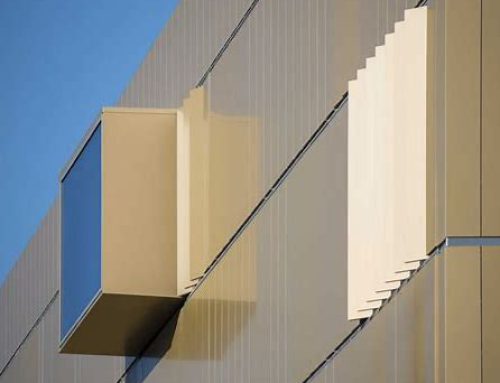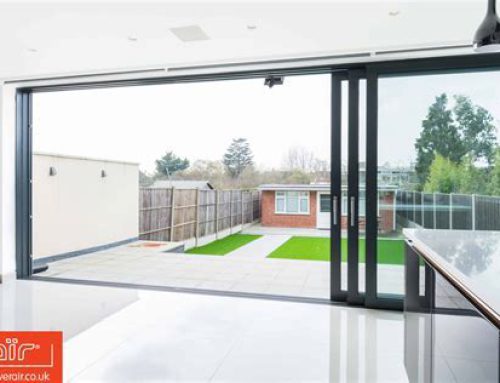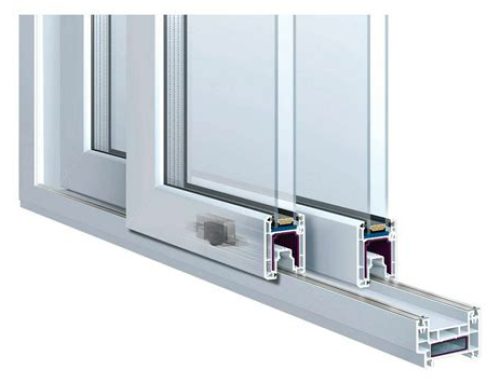exterior glass wall environment of the building

In the realm of modern architecture, the concept of merging indoor and outdoor spaces has gained considerable traction. One striking innovation that exemplifies this harmonious integration is the exterior glass wall. This architectural marvel not only transforms the aesthetics of a building but also profoundly impacts the occupants’ experience and the surrounding environment. As the world becomes increasingly conscious of sustainability and the importance of connecting with nature, exterior glass walls have become a symbol of progress, allowing buildings to breathe and embrace their surroundings.
Aesthetics and Visual Transparency:
Exterior glass walls elevate the visual appeal of any structure, offering a sleek and contemporary look that stands in contrast to traditional opaque facades. The transparency of glass provides a sense of lightness and openness, creating an inviting atmosphere for both occupants and passersby. By allowing an unobstructed view of the building’s interior and exterior, glass walls establish a strong connection between the built environment and nature.
Embracing Natural Light:
One of the most significant advantages of exterior glass walls is their ability to maximize the use of natural light. The transparency of glass enables sunlight to permeate deep into the building, reducing the need for artificial lighting during the day. This feature not only cuts down on energy consumption but also contributes to the well-being of occupants. Studies have shown that exposure to natural light can enhance productivity, mood, and overall health, making glass-walled spaces not just aesthetically pleasing but also functionally superior.
Energy Efficiency and Sustainability:
Contrary to initial perceptions, exterior glass walls can be designed to enhance a building’s energy efficiency. Advanced glazing technologies, such as low-emissivity (low-e) coatings and insulated glass units, help regulate indoor temperatures by preventing excessive heat gain in summer and heat loss in winter. The strategic use of glass, combined with energy-efficient HVAC systems, can significantly reduce a building’s carbon footprint, aligning with the global push for sustainability and environmentally responsible architecture.
Connecting with the Surroundings:
For buildings located in scenic landscapes or urban centers, exterior glass walls offer a unique opportunity to connect with the surroundings. Whether it’s an office building with panoramic city views, a beachfront resort, or a house nestled amidst nature, glass walls allow occupants to experience the beauty of their environment continuously. This connection fosters a sense of harmony and appreciation for the natural world, nurturing a deeper understanding of the local ecosystem and ecosystem services.
Challenges and Solutions:

While exterior glass walls bring an array of advantages, they also present some challenges that architects and builders must address. One concern is thermal comfort, as large glass surfaces can lead to temperature imbalances. To mitigate this, careful consideration of shading elements, such as overhangs, louvers, or awnings, can regulate the amount of sunlight and heat entering the building.
Another concern is privacy. With traditional walls, occupants have a sense of seclusion, which may be compromised with glass walls. However, creative design solutions like using frosted or tinted glass, incorporating curtains or blinds, or strategic landscaping can maintain privacy while preserving the beauty and functionality of glass walls.
Challenges and Solutions:

While exterior glass walls bring an array of advantages, they also present some challenges that architects and builders must address. One concern is thermal comfort, as large glass surfaces can lead to temperature imbalances. To mitigate this, careful consideration of shading elements, such as overhangs, louvers, or awnings, can regulate the amount of sunlight and heat entering the building.
Another concern is privacy. With traditional walls, occupants have a sense of seclusion, which may be compromised with glass walls. However, creative design solutions like using frosted or tinted glass, incorporating curtains or blinds, or strategic landscaping can maintain privacy while preserving the beauty and functionality of glass walls.
In Conclusion:
Exterior glass walls exemplify the synergy between architectural design, sustainability, and the natural environment. They transform the way we experience buildings, blurring the boundaries between indoor and outdoor spaces. By harnessing the power of natural light, reducing energy consumption, and enhancing visual connectivity, glass walls have become a symbol of innovation and progress in contemporary architecture. As our world embraces sustainable practices and seeks a deeper connection with nature, exterior glass walls will undoubtedly continue to shape the future of building design, ushering in an era where architecture and the environment coexist in perfect harmony.
Human-Centric Design:
Beyond the practical benefits, exterior glass walls prioritize human-centric design, focusing on the well-being and comfort of occupants. The introduction of natural light into interior spaces not only reduces the dependence on artificial lighting but also creates an atmosphere that promotes better mood, concentration, and productivity.
Moreover, by providing occupants with unobstructed views of the external surroundings, glass walls foster a sense of connection with nature. This connection has been shown to reduce stress levels, improve mental health, and increase creativity, as individuals feel more attuned to the natural rhythms of the world outside.
Applications Across Industries:

The appeal of exterior glass walls extends across various industries, shaping the design of commercial spaces, hospitality venues, and residential buildings alike.
In commercial settings, glass-walled offices and workspaces offer employees a brighter and more inviting environment, contributing to higher job satisfaction and employee retention. The seamless integration of interior and exterior spaces can also create inspiring meeting areas that encourage collaboration and creativity.
In the hospitality sector, hotels and resorts often leverage exterior glass walls to capitalize on scenic locations. Guests can immerse themselves in breathtaking landscapes and feel more connected to their surroundings during their stay, creating unforgettable experiences.
In residential architecture, glass walls have become increasingly popular, especially in modern and minimalist designs. Homeowners can revel in the beauty of their gardens, waterfront views, or urban skylines without leaving the comfort of their living spaces. The integration of outdoor and indoor spaces also fosters a seamless transition for entertaining and enjoying family gatherings.
Sustainability and Green Building Certification:
With the growing emphasis on sustainable building practices, exterior glass walls have become a key feature for obtaining green building certifications. By maximizing natural light and reducing the need for artificial lighting, these structures significantly decrease energy consumption. Moreover, when combined with energy-efficient HVAC systems, they contribute to a reduced carbon footprint, lower operating costs, and increased long-term value for the building.
For architects and developers seeking LEED (Leadership in Energy and Environmental Design) or other green building certifications, incorporating exterior glass walls into their designs is a strategic choice. These walls are a testament to the commitment to sustainability and align with the principles of environmentally responsible construction.
Conclusion:
The concept of exterior glass walls is much more than just an architectural trend. It represents a profound shift in the way we design and experience buildings – one that harmonizes our constructed environments with the natural world. These glass-clad structures create a sense of wonder, connecting us with the outdoors while offering the benefits of energy efficiency and human-centric design.
As technology advances and innovative materials are developed, the possibilities for exterior glass walls will only expand. Architects and designers will continue to explore ways to strike the perfect balance between transparency, thermal performance, and privacy, ensuring that these structures remain a symbol of elegance, sustainability, and a deep appreciation for the environment. With the continued pursuit of sustainable and human-centric design, exterior glass walls will play an essential role in shaping the architecture of the future.





Leave A Comment